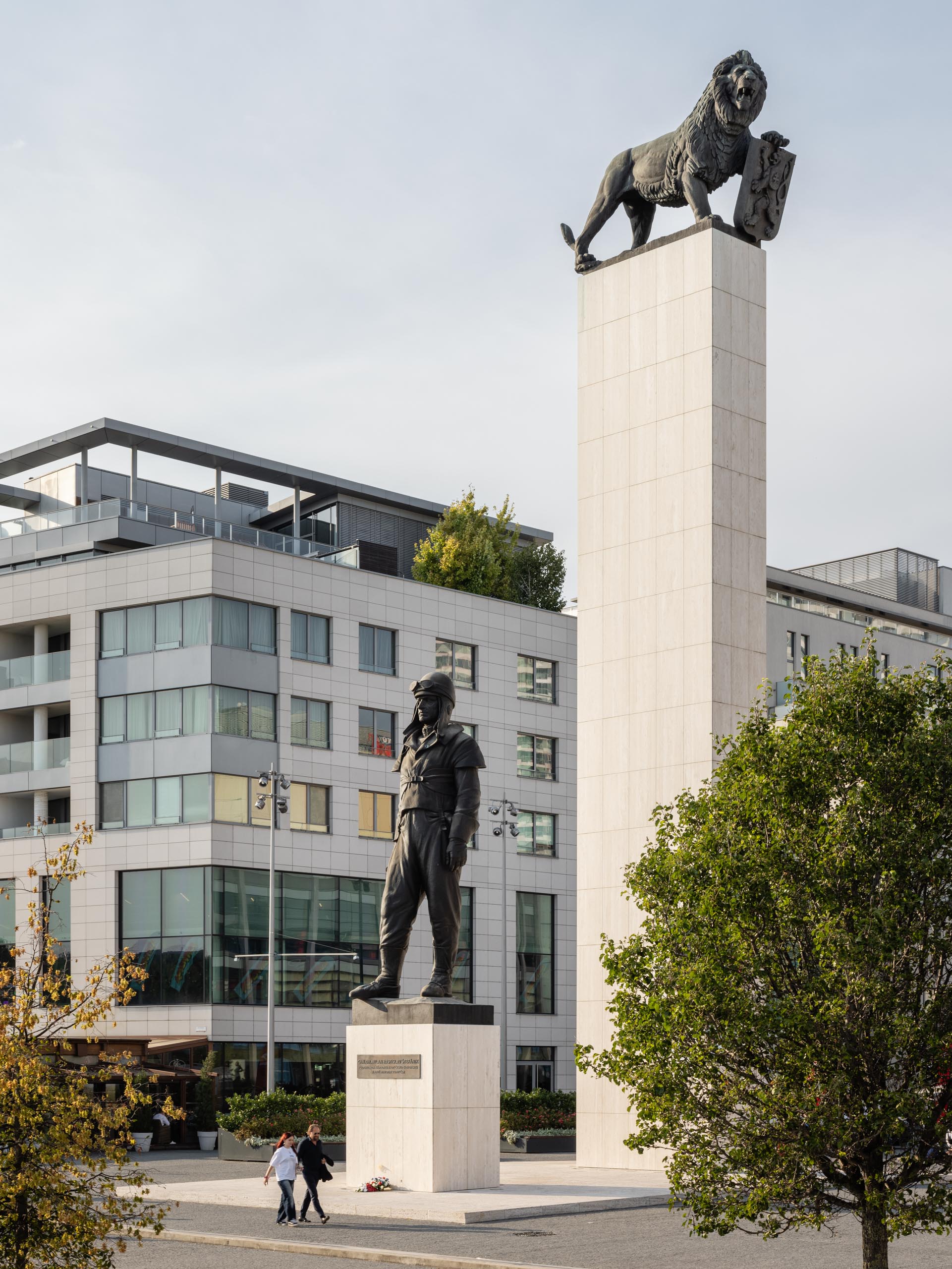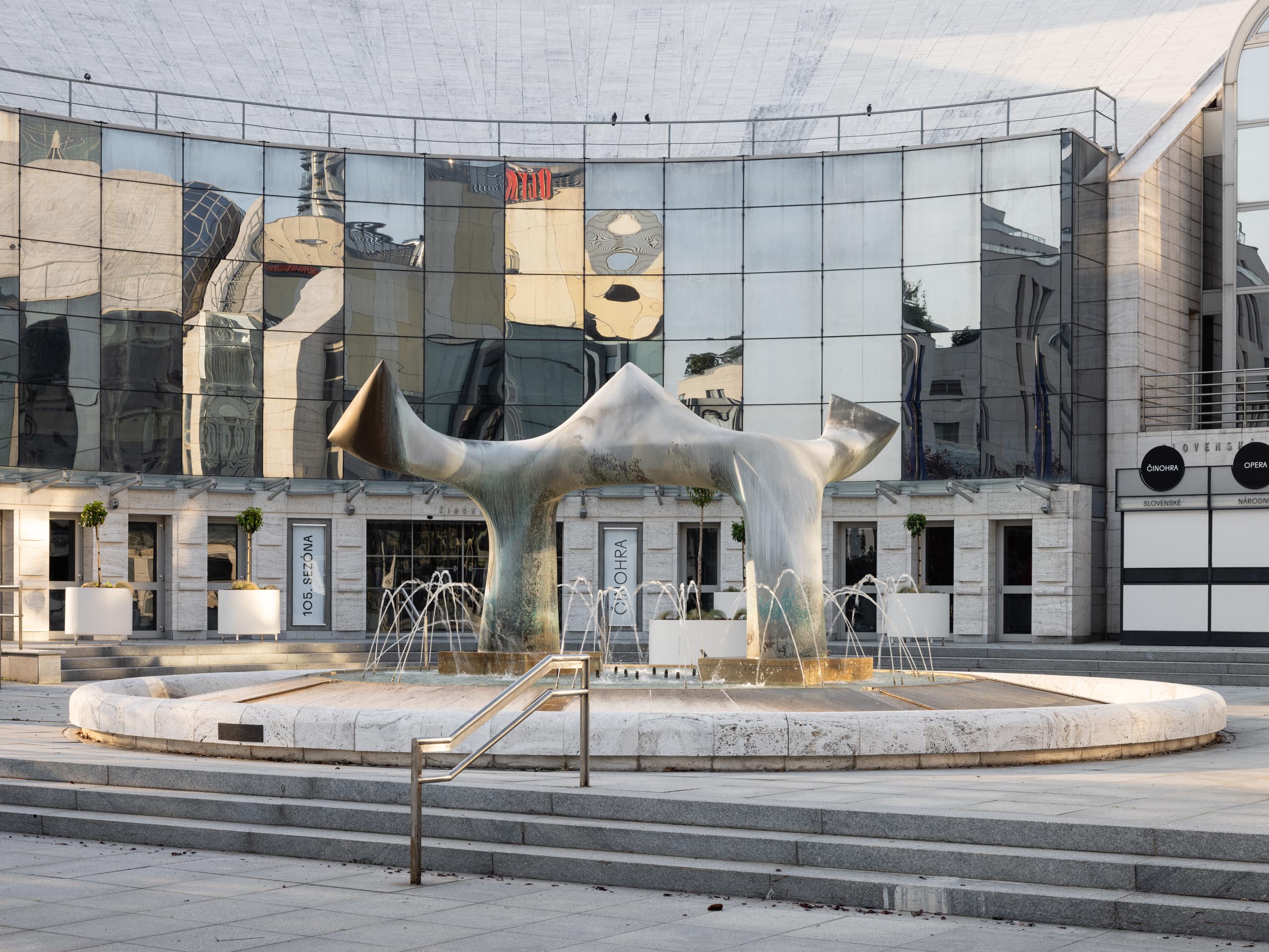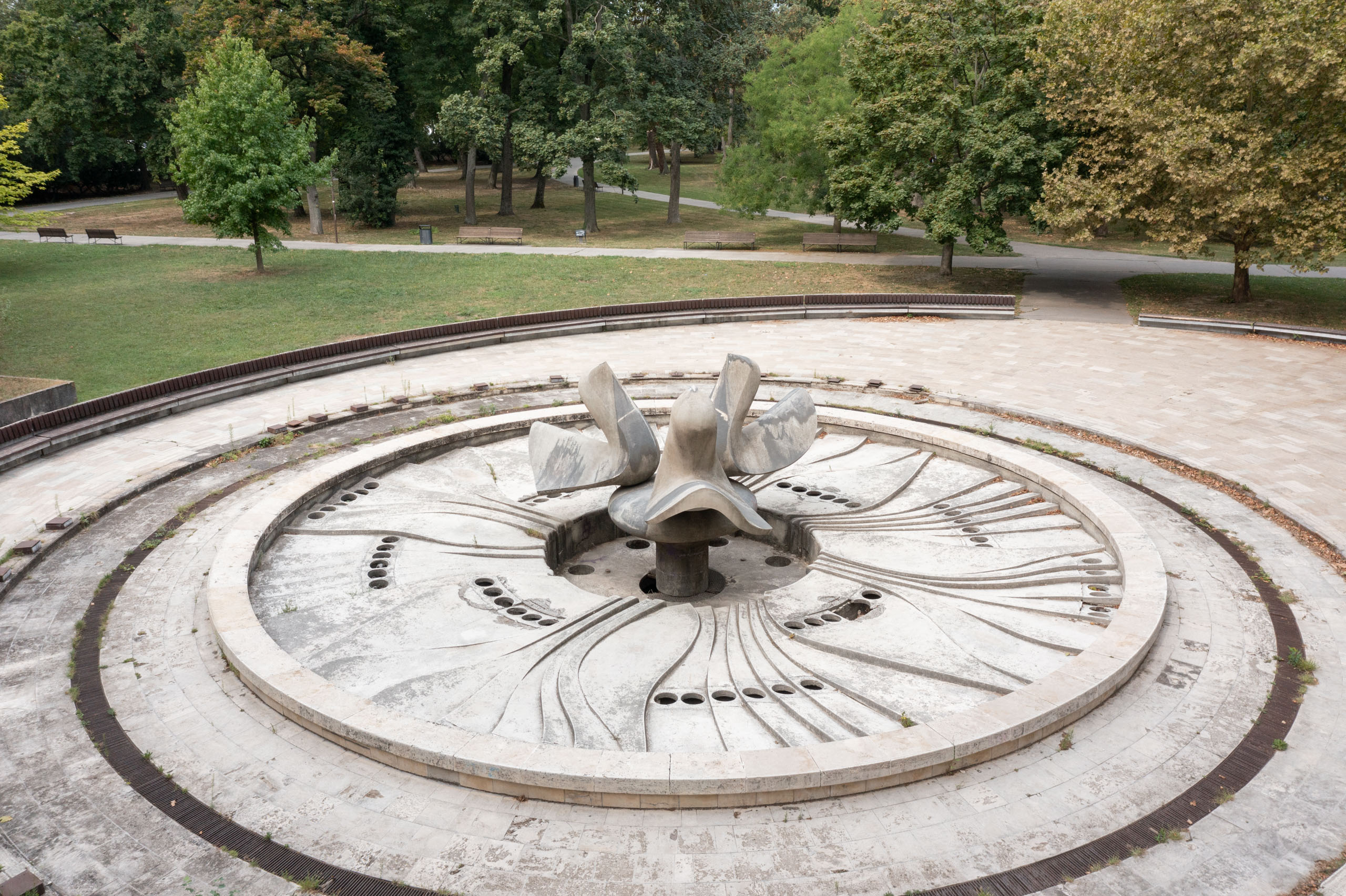The monumental sculptural equatorial sundial was created as an artistic addition to Port Bridge (until 1993 known as Dukla Heroes Bridge; working name Highway-Railway Bridge), which was built between 1977 and 1985. It is situated among flora on the Petržalka side of the Danube near to the University of Economics. The clock is functional; in sunny weather it will show the time between 7 a.m. until 5 p.m. The approximately semicircular dial, which lies parallel to the equatorial plane (hence the name "equatorial clock"), features at its centre a circular relief target with a stylised human figure. The figure, standing face on, is divided at the centre and is completed with an abstract geometric motif. The metal "stylus" (essentially a small clock hand) is comprised of three rods aligned parallel to the Earth's axis of rotation. It casts its shadow onto the dial, which is divided into twelve equal segments by a scale marked with Roman numerals. The shadow moves from west to east throughout the day, indicating the time on the dial scale. The dial features ten convex spherical relief discs that show the position of the sun (rising and setting around the centre of the dial).
A sundial is a simple timekeeping device (gnomon) that measures true local solar time. True solar time indicates the actual movement of the Sun, so flows irregularly and cannot be measured by mechanical clocks. The origin of sundials is not precisely known, but earliest records are from China and Egypt in around 1,500 BCE. Portable sundials probably originated in antiquity, were perfected by Arabs in the 13th century, and appeared in Germany in around the middle of the 15th century. The oldest preserved sundials in Slovakia (Košice, Spišská Kapitula) also date back to the 15th century. The best known and most common is the vertical sundial (with dial face in a vertical plane), the type constructed on walls of sacred and secular buildings. Dozens of these have been preserved in Slovakia. Equatorial clocks have rarely been preserved, with the surviving examples dating back only to the second half of the 20th century (Považská Bystrica, Rožňava).
Sculptor Š. Prokop conceived the equatorial sundial as a monumental sculpture, and collaborated in its creation with the architects L. Beisetzer, J. Šimek, and J. Jakubík. It is by far the largest sundial in Slovakia.
Its rear face is currently damaged by climbing holds. In 2015, volunteers from the Na Hrane civic association cleaned the area and created a space for climbing, slacklining, and other sporting activities.
Research status as of 06. 08. 2024.
PK



